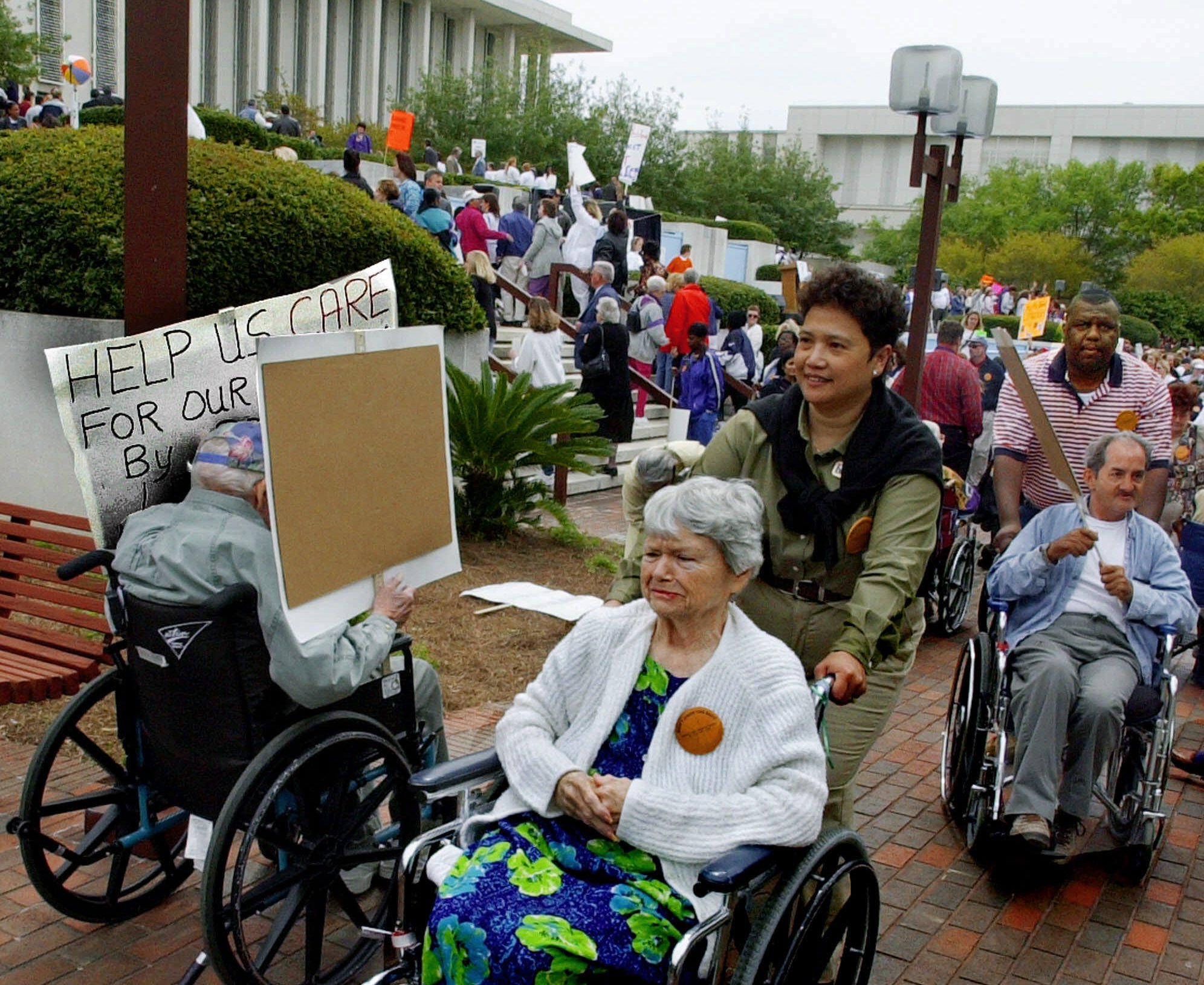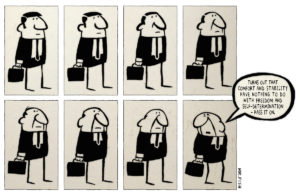The Secret to Living Longer Is Being Rich, Study Reveals
The connection between Americans’ lifespans and how much money they have is “a failure of social policy.” Elderly citizens in wheelchairs at a rally on the Florida Capitol steps in 2001. (Mark Foley / AP)
Elderly citizens in wheelchairs at a rally on the Florida Capitol steps in 2001. (Mark Foley / AP)
The top 400 richest Americans have more wealth than the 150 million Americans in the bottom 60% of the country’s wealth distribution, according to a January working paper from University of California at Berkeley economist Gabriel Zucman.
America’s rich frequently pay lower taxes, use their money to influence public policy and do not have to choose between paying medical bills and paying their rent. They also don’t suffer the indignity of having strangers comment on the groceries they purchase with SNAP benefits, as Stephanie Land describes in her memoir, “Maid.” Add to all this another benefit of wealth, according to a new study from the Government Accountability Office: a longer lifespan.
Even as life expectancy in general is on the rise, it “has not increased uniformly across all income groups, and people who have lower incomes tend to have shorter lives than those with higher incomes,” the report reveals.
Both poor and middle-class Americans are less likely than the wealthy to live into their 70s and 80s, the GAO found. More than 75% of the wealthiest Americans who were in their 50s in 1991 were still alive in their 70s in 2014. By contrast, less than half of the poorest 20% of 50-somethings surveyed were alive by the same year.
The GAO report attributes this discrepancy to multiple factors, including a large gap in retirement savings and a lack of assets like homes to draw on to help offset unexpected costs for lower-income Americans. This causes a dependence on Social Security benefits to pay bills of all kinds, including medical bills.
The GAO report’s results echo previous studies on the relationship between wealth and lifespan in America. A 2016 study by economists from Stanford, Harvard and McKinsey and Co, among others, found that “In the United States between 2001 and 2014, higher income was associated with greater longevity, and differences in life expectancy across income groups increased over time.” Low-income residents in wealthier areas, however, tended to live longer than residents of uniformly poor communities, with a difference of up to 15 years for men, and up to ten for women.
A University of Washington study from 2017 found the gap could vary by up to 20 years depending on the region of the United States.
“Over time, the top fifth of the income distribution is really becoming a lot wealthier — and so much of the health and wealth gains in America are going toward the top,” Harold Pollack, a health care expert at the University of Chicago who is not affiliated with the report told the Post. He called those disparities “a failure of social policy.”
Senator and presidential candidate Bernie Sanders, I-Vt., commissioned the GAO report in 2016, The Washington Post explains, after meeting with residents of MacDowell County, W.Va., where, Sanders aides tell the Post, the average life expectancy is 64 years old.
“We are in a crisis never before seen in a rich, industrialized democracy,” Sanders said in a statement. “For three straight years, overall life expectancy in the wealthiest nation in the history of the world has been in decline.” He adds, “If we do not urgently act to solve the economic distress of millions of Americans, a whole generation will be condemned to early death.”
Read the entire GAO report here.
Your support matters…Independent journalism is under threat and overshadowed by heavily funded mainstream media.
You can help level the playing field. Become a member.
Your tax-deductible contribution keeps us digging beneath the headlines to give you thought-provoking, investigative reporting and analysis that unearths what's really happening- without compromise.
Give today to support our courageous, independent journalists.






You need to be a supporter to comment.
There are currently no responses to this article.
Be the first to respond.